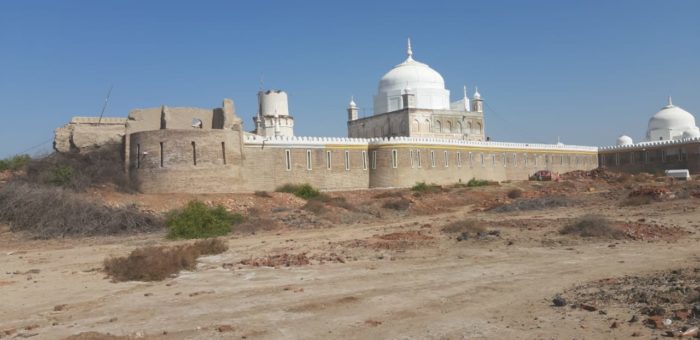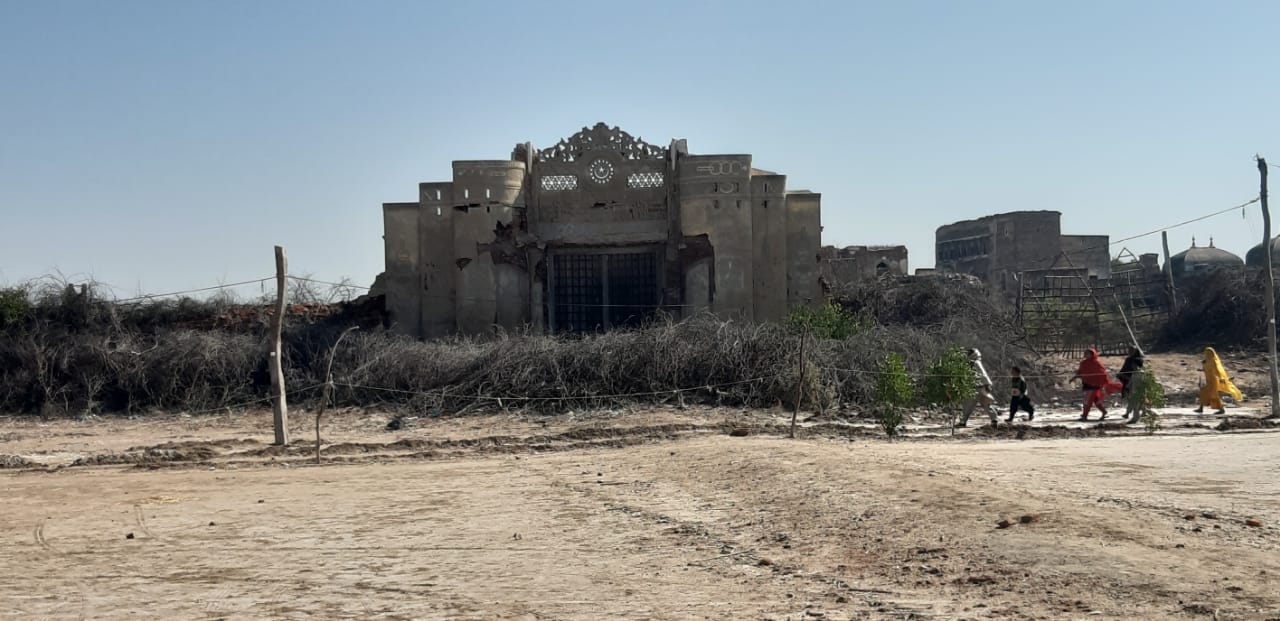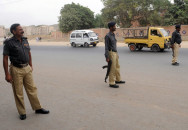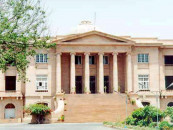A long wait: Historic shrine reopens for devotees in Sindh
Hundreds throng to Dargah Luari Sharif as it opens doors to disciples after 37 years of closure

PHOTO: Hafeez Tunio/ Express
“I have spent the last three decades in unease waiting for this day,” said the ailing woman as her lips twitched with every word that spilled out of her mouth. “There has not been a day I did not miss my murshid Sultanul Auliya Khawaja Muhammad Zaman and his shrine and my only wish is to die on his doorstep,” the 85 year old added.
 PHOTO: Hafeez Tunio/ Express
PHOTO: Hafeez Tunio/ ExpressLocated some 15 kilometres from Badin town, Dargah Luari Sharif was sealed in 1983, when the matter of the shrine’s custodianship resulted in bloodshed and clashes between two groups. Despite the shrine’s closure, though, devotees would still gather at the mosque on the 4th of every month of the lunar calendar, reciting verses from the Holy Quran in remembrance of their spiritual leader.
But after three decades of longing, it would be for the first time in 37 years that devotees were allowed to access the shrine and pray within its vicinity.
Many who visited the shrine had journeyed from the furthest corners of Sindh and waited long hours in queues for their turn to step into the shrine with their bare feet on the cold marble floor.
“Before walking into the shrine one has to cover their head and remove their shoes as a sign of respect to their murshid,” explained Saen Bux Junejo, who is a lecturer at Government College in Dokri, Larkana. “The two-and-a-half-century-old shrine is unique to Sindh. There is no concept of giving alms or laying chadir here like other shrines. Men and women have different visitation hours and there are no signs of panhandling within the shrine’s premises.”
From 1737 to date, nine Janashins (successors) have served the shrine, which has been graced by the footsteps of several revered mystics, rulers, warriors, politicians, and Sufi poets including Shah Abdul Latif Bhittai and Abdul Rahim Garhori.
“Dargah Luari Sharif has also been referenced by multiple scholars in their publications, including Dr Hotchand Gur Bakhshani who compiled and published Shah Latif Shah’s risalo. Other scholars who have worked or published books on the historic shrine include Dr Nabi Bux Baloch, Allama Umer Bin Daudpoto, Pir Ali Ahmed Rashdi and Dr Abdul Ghaffar Soomro,” said Junejo.
 PHOTO: Hafeez Tunio/ Express
PHOTO: Hafeez Tunio/ ExpressGiven the shrine’s influence in bordering areas of India and Pakistan, Mahatma Gandhi, leader of the Indian National Congress, also visited the sixth Janashin, Khawaja Ahmed Zaman.
According to Din Mohammad Keerio, the director of the University of Sufism and Modern Sciences (USMS) in Bhitshah, the fifth Janashin of the shrine, Khawaja Mohammad Saeed was a famous writer and poet of his time. “He monetarily contributed to the development of Sindh Madressatul Islam University, which was founded by Hassan Ali Effendi in 1885 and is one of the oldest educational institutions of South Asia.”
The grave of Mir Ghulam Shah Shahwani, one of the Talpur family members who fought against the British Army under Charles Napier’s command in the battle of Miani, is also present in the shrine’s courtyard. “He was a diehard follower of Dargah Luari Sharif and was buried here as per his will,” disclosed Keerio.
While the magnificent hand-painted work on the shrine shows the deep artistic interest of the people at that time, the houses adjacent to the shrine and the crumbling fort are an indicator of the neglect the shine has been subject to by the Auqaf department and successive governments.
“The fort was built by the third Janashin, Khawaja Mohammad Zaman-II (Saani), following the attacks of invaders who used to enter Sindh and loot the people,” said Junejo. “About 4,900 acres of the shrine’s land was handed over to the Auqaf department to look after the shrine but the department has auctioned this land to various people for farming. While the people earn millions from the produce and profit from the land, the department hasn’t bothered spending a penny to conserve the shrine,” he added.
According to Munawar Mahesar, a senior official at the Auqaf department, the shrine and fort had been damaged due to flooding and subsequent rains in 2010 and 2011. “The development work could not been initiated due to the tense situation between two rival groups at the shrine but now that the shrine is functional, we will initiate developmental work soon,” he stated.
Abdul Rahman Baloch, the manager of Luari Sharif shrine, told The Express Tribune that they did not trust the government’s promises of restoring and conserving the shrine. “We will preserve the fort, its walls and other belongings with the shrine’s funds. We have already started development work and will soon restore the shrine to its original form,” he concluded.



















COMMENTS
Comments are moderated and generally will be posted if they are on-topic and not abusive.
For more information, please see our Comments FAQ